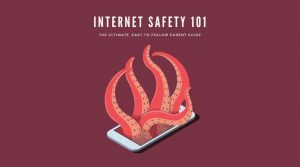It’s no secret that focusing on psychological wellness and using emotional coping tools can help our kids be healthier and happier, but what’s more surprising is just how versatile and effective self-hypnosis can be.
Over the last decade, strong evidence has been mounting from a series of compelling clinical studies. It indicates that guided thought, repeated affirmations, and envisioned scenarios can help children to reduce pain, fear, night terrors, and bedwetting. Self-hypnosis is also associated with higher self-esteem and a positive perception of quality of life.
Given the relative ease of delivery, self-hypnosis is arguably an underused psychological tool for boosting our children’s mental well-being, emotional resilience, and general happiness.
Let’s explore the science-based benefits of self-hypnosis for kids.
The infographic

The Science
Cast aside any images you may have of commercial “hypnosis”, where a stage performer draws goofy behavior out of an enthralled participant. Evidence-based, therapeutic hypnosis is rooted in the use of guided mental imagery and verbal repetition to induce a trance-like state in which focus and concentration are heightened.1Hypnosis
mayoclinic.org/tests-procedures/hypnosis/about/pac-20394405
This state does not fully remove a person from conscious awareness, it merely focuses their attention on the hypnotic session. While scientists do not fully understand the precise mechanisms that make hypnosis work, researchers at Harvard have determined that areas of the brain responsible for cognitive processing and regulation of the body both show greater activity during hypnosis, while the portion of the brain linked to choosing and being aware of one’s actions shows significant reduction in activity. 2 Williams, S. C. (2015). Study identifies brain areas altered during hypnotic trances. News Center, 28. med.stanford.edu
An identifiable difference in brain function in those undergoing hypnosis suggests that the trance-like state and increased ability to cope with pain and emotional stimulus are not a placebo effect. While hypnosis and self-hypnosis are valued for their ease of administration and typical lack of side effects, headaches, drowsiness, and dizziness are experienced by some participants.
Self-hypnosis benfits for kids (examining the evidence)
This round-up of 15 scientific studies presents both direct research on hypnosis and self-hypnosis in pediatric patients and meta-analyses suggesting research-driven potential for therapeutic application.
1) Treats chronic headache symptoms
Children dealing with chronic headaches may find that their moods are affected, they miss out on both school and recreational fun more often than their peers, and that pain makes it difficult to focus when needed. Treatment can be difficult, because pediatric patients respond far less effectively to traditional tryptamine-based drugs (triptans) and beta-blockers, and may experience negative side effects.
While short-term analgesic use is effective in some children, long-term excessive use may lead to rebound headaches in people of any age. A study of the effects of hypnosis on adolescents with chronic headaches revealed that self-hypnosis training is a successful method of significantly improving symptoms.
Key study/paper: Kohen, Daniel P., and Robert Zajac. “Self-hypnosis training for headaches in children and adolescents.” The Journal of pediatrics 150.6 (2007): 635-639.
Source: sciencedirect.com/science/…/S0022347607001333735608097248
2) Bolsters resilience during serious illness
Coping with pediatric cancer is, naturally, a stressful and anxiety-inducing experience for a child; loss of sleep through insomnia and poor rest, inability to eat or drink, nervous vomiting, and unmanageable behavior during new, frightening, painful, or invasive treatments are common.
One clinical report addressing the role of self-hypnosis in pediatric cancer treatment notes that fear and depression were reduced and procedure tolerance increased in response to group trance sessions. Other benefits included easier, deeper, and longer sleep and improved ability to consume food and drink.
Key study/paper: Labaw, Wallace, et al. “The use of self-hypnosis by children with cancer.” American Journal of Clinical Hypnosis 17.4 (1975): 233-238.
Source: tandfonline.com/doi/…/10.1080/00029157.1975.10403749
3) Allows self-regulation of temperature
Body temperature is directly related to our health and well being; whether it’s a fever that’s too high or an icy day that’s too cold, extreme temperatures are dangerous. Excessive warmth and cold can also be triggers or symptoms of several disorders, primarily vascular.
When the effect of self-hypnosis was measured via biofeedback, nearly all participants in a study of children aged 5 to 15 were able to raise and lower their temperature slightly at will, showing therapeutic implications for migraines and Raynaud’s syndrome, among others.
Key Study/Paper: Dikel, William, and Karen Olness. “Self-hypnosis, biofeedback, and voluntary peripheral temperature control in children.” Pediatrics 66.3 (1980): 335-340.
Source: https://pediatrics.aappublications.org/content/66/3/335.short
4) Reduces frequency of night terrors
Children who are plagued with frequent night terrors often face anxiety and embarrassment in addition to poor sleep and the health detriment which accompanies it. Finding a solution often requires a combination of practical, psychological, and pharmaceutical intervention, and one study has demonstrated that self-hypnosis may play a positive role in the process.
An assessment of children treated for frequent night terrors with a combination of medication therapy, education, and self-hypnosis determined that the combination was an effective treatment, and that hypnosis could help to eliminate the need for medication over time.
Key study/paper:Kohen, Daniel P., Mark W. Mahowald, and Gerald M. Rosen. “Sleep-terror disorder in children: the role of self-hypnosis in management.” American Journal of Clinical Hypnosis 34.4 (1992): 233-244.
Source: https://www.tandfonline.com/doi/abs/10.1080/00029157.1992.10402853
5) Improves breathing in CF patients
Cystic Fibrosis, or CF, is a progressive inherited disease which can damage the lungs and digestive system . One of the most common symptoms of CF is difficulty breathing, as thick mucus buildup can result in pulmonary obstruction, and lung infections are frequent.
Peak respiratory flow rate, or PEFR, refers to the peak flow rate a patient generates when exhaling forcefully after a full inhale; it is a metric of breathing efficacy which can be easily self-monitored. Use of self-hypnosis in pediatric Cystic Fibrosis patients has been shown to result in a significant PEFR increase directly after a self-hypnotic session.
Key study/paper: Belsky, Judy, and Prabha Khanna. “The effects of self-hypnosis for children with cystic fibrosis: a pilot study.” American Journal of Clinical Hypnosis 36.4 (1994): 282-292.
Source: https://www.tandfonline.com/doi/abs/10.1080/00029157.1994.10403088
6) Lessens somatic pulmonary symptoms
When a symptom crops up that seems to defy any physical cause, the next course of action for a doctor is to determine if it may be somatic, a term referring to a physical symptom triggered by mental distress. Somatic symptoms are commonly associated with anxiety and trauma, and many children who experience them find relief through therapy.
As one study demonstrates, self-hypnosis may be effective in treating somatic pulmonary symptoms. In a review of pediatric patients presenting with pulmonary symptoms of undetected origin, self-hypnosis was shown to effectively improve habit coughs, dyspnea (breathing difficulties), and chest pain related to anxiety in 95% of cases.
Key study/paper: Anbar, Ran D., and Susan C. Geisler. “Identification of children who may benefit from self-hypnosis at a pediatric pulmonary center.” BMC pediatrics 5.1 (2005): 1-4.
Source: https://link.springer.com/article/10.1186/1471-2431-5-6
7) Decreases severity of Tourette symptoms
Tourette Syndrome, an oft-misunderstood disorder characterized by motor and vocal tics a patient cannot control, can be difficult to treat through medication; though antidepressants, stimulants, dopamine blockers, and alpha-andrenergic agonists each have treatment applications, no one has been proven to be effective across the board and each comes with undesirable side effects for children.
Behavioral treatment and psychotherapy, including the use of self-hypnosis, have been proven effective in decreasing the severity of tics. A case study in which four pediatric Tourette patients used self-hypnosis training in combination with medication therapy demonstrated a reduction in tic frequency; in half the cases, medication was able to be reduced or eliminated.
Key study/paper: Hietolahti-Ansten, M., & Kalliopuska, M. (1990). “Self-Esteem and Empathy among Children Actively Involved in Music” Perceptual and Motor Skills, 71, 1364–1366.
Source: https://www.tandfonline.com/doi/abs/10.1080/00029157.1987.10402701
8) Stops insomnia and restless sleep
When kids are dealing with insomnia and restless sleep that don’t have a physical cause, stress is often a culprit. In these pediatric patients, psychiatric care, including education on self-hypnosis, may be effective at improving sleep onset time and decreasing restlessness.
One assessment of the impact of self-hypnosis on sleep revealed that out of 70 patients experiencing insomnia lasting 30 or more minutes, 90% saw improvement after implementing self-hypnosis techniques. In addition, over half of the patients who complained of nighttime awakenings reported total resolution of the issue.
Key study/paper: Anbar, Ran D., and Molly P. Slothower. “Hypnosis for treatment of insomnia in school-age children: a retrospective chart review.” BMC pediatrics 6.1 (2006): 1-6.
Source: https://link.springer.com/article/10.1186/1471-2431-6-23
9) Helps to stop bedwetting
A physical cause is sometimes the cause of childhood bedwetting, also called nocturnal enuresis, but psychological triggers including fear, insecurity, and stress can also impact the condition. Children may feel distressed or embarrassed by bedwetting incidents, but both medication and psychological interventions, including self-hypnosis, have been proven helpful.
In fact, as one study indicates, self-hypnosis may be a better long-term strategy for ending bedwetting than medication. Long term research on the efficacy of medication vs. self-hypnosis in stopping bedwetting determined that sustained self-hypnosis resulted in a 68% success rate at a nine-month follow up versus a 24% success rate in those who took a medication regimen(imipramine).
Key study/paper: Banerjee, Sanjay, Anita Srivastav, and Bhupendra M. Palan. “Hypnosis and self-hypnosis in the management of nocturnal enuresis: a comparative study with imipramine therapy.” American Journal of Clinical Hypnosis 36.2 (1993): 113-119.
Source: https://www.tandfonline.com/doi/abs/10.1080/00029157.1993.10403053
10) Increases quality of life
Our perception of how good or bad our life is based on our emotional reaction to our circumstances, real and perceived — this is referred to by psychologists as “quality of life”. While chronically ill children may deal with a lessened perception of quality of life than their peers due to the challenges they face, training in self-hypnosis has been shown to ease some of this distress.
A meta-analysis of studies addressing the controlled outcomes of clinical hypnosis in pediatric patients determined that one result of childhood self-hypnosis training is an improved perception of quality of life.In addition, perception of some physical symptoms and tolerance for treatments improved in those who received the training.
Key study/paper: Adinolfi, Barbara, and Nicoletta Gava. “Controlled outcome studies of child clinical hypnosis.” Acta Bio-Medica: Atenei Parmensis 84.2 (2013): 94-97.
11) Minimizes chronic pain symptoms
Chronic pain can be debilitating and emotionally draining in patients of all ages; when the pain doesn’t have an identifiable cause, treatment options become harder to navigate, especially in pediatric patients. Often, pain and other symptoms that aren’t tied to a physical condition are related to anxiety, depression, and other emotional distress, and psychiatric interventions including hypnosis have shown promise as treatments.
A review of pediatric pulmonary patients demonstrating chest pain without obvious physical cause determined that in 80% of cases treated with hypnotherapy, symptoms improved and no new symptoms appeared. Reviews of additional studies note that children experiencing chronic pain associated with chronic illnesses and medical procedures have also found pain relief through hypnosis.
Key study/paper: Rogovik, Alex L., and Ran D. Goldman. “Hypnosis for treatment of pain in children.” Canadian Family Physician 53.5 (2007): 823
12) Raises self-esteem
Establishing a keen sense of self is an important part of the way our kids navigate the world, learning to choose friends who respect them, set boundaries, and value their abilities and contributions. This begins through positive reinforcement at home, but when children are faced with the oft-difficult social landscape of their school years, levels of self-esteem may sometimes regress.
Psychological care intended to bolster a child’s well-being and sense of self, including hypnosis through the use of envisioned scenarios, have been shown to increase children’s self-concept. A meta-analysis of studies addressing the controlled outcomes of clinical hypnosis in pediatric patients determined that one result of childhood self-hypnosis training is higher self esteem.
Key study/paper: Adinolfi, Barbara, and Nicoletta Gava. “Controlled outcome studies of child clinical hypnosis.” Acta Bio-Medica: Atenei Parmensis 84.2 (2013): 94-97.
13) Aids frequent stomach aches
A nervous stomach, “Monday morning tummy”, and numerous other nicknames have been attributed to the manifestation of anxiety and emotional distress through gastrointestinal symptoms, a condition to which some children are overly prone. When a visit to the pediatrician turns up no known cause for frequent stomach aches, psychological causes are typically the next culprit to be considered.
The use of guided mental imagery and relaxation techniques as a means of hypnosis has been shown to reduce chronic somatic stomach pain and restore a normal lifestyle in every participant of one key study. A long-term assessment of six children presenting with chronic severe abdominal pain without physical cause demonstrated that all were able to reduce or eliminate the pain using guided self-hypnosis in less than three weeks.
Key study/paper: Sokel, Beverly, Sean Devane, and Arnon Bentovim. “Getting better with honor: Individualized relaxation/self-hypnosis techniques for control of recalcitrant abdominal pain in children.” Family Systems Medicine 9.1 (1991): 83.
14) Provides tools for controlling anxiety
Feeling occasional anxiety before a big test, try-out, or tough conversation are all normal parts of life, but just like adults, some children are clinically prone to chronic anxiety which can be emotionally, socially, and scholastically impactful. In many cases, doctors prefer to use coping strategies and behavioral therapy over medication in pediatric patients, as side effects and long-term implications of typical anxiety medicines may be undesirable.
The use of self-hypnosis through relaxing mental imagery is one way that children can cope with anxiety in difficult, frightening, or painful situations. A meta-analysis of research related to the impact of self-hypnosis on pediatric emergency care notes that numerous studies have successfully associated self-hypnosis with reduction of anxiety.
Key study/paper: Kohen, Daniel P., et al. “The use of relaxation-mental imagery (self-hypnosis) in the management of 505 pediatric behavioral encounters.” Journal of Developmental and Behavioral Pediatrics (1984).
Source: https://www.tandfonline.com/doi/abs/10.1080/00207148608406994
15) Lets children feel in control
When children become old enough to truly understand that they’re not in charge, it often results in periods of frustration, regression, and rebellion, all typical stages of emotional development. Children facing serious, chronic illnesses experience these emotions in a different and far more serious way, and may face significant emotional distress regarding their lack of control over their illness and its necessary treatments.
Psychological interventions, including the use of self-hypnosis through positive visualizations, has been shown to significantly increase the degree to which pediatric patients feel in control of themselves and their illness. The use of self-hypnosis in pediatric Cystic Fibrosis patients has been shown to result in improvements to patients’ locus of control relating to both their lives and their health.
Key study/paper: Belsky, Judy, and Prabha Khanna. “The effects of self-hypnosis for children with cystic fibrosis: a pilot study.” American Journal of Clinical Hypnosis 36.4 (1994): 282-292.
Source: https://www.tandfonline.com/doi/abs/10.1080/00029157.1994.10403088
Wrapping up
Hypnosis and self-hypnosis both have the potential for therapeutic application in pediatric patients, as they have been proven effective at reducing both physical and somatic pain and mitigating some emotional distress. Hypnosis is particularly likely to be a valuable coping tool for children suffering from anxiety and related issues, as guided visualizations have been linked to the elimination of night terrors, bed-wetting, and nervous stomach, among others.








